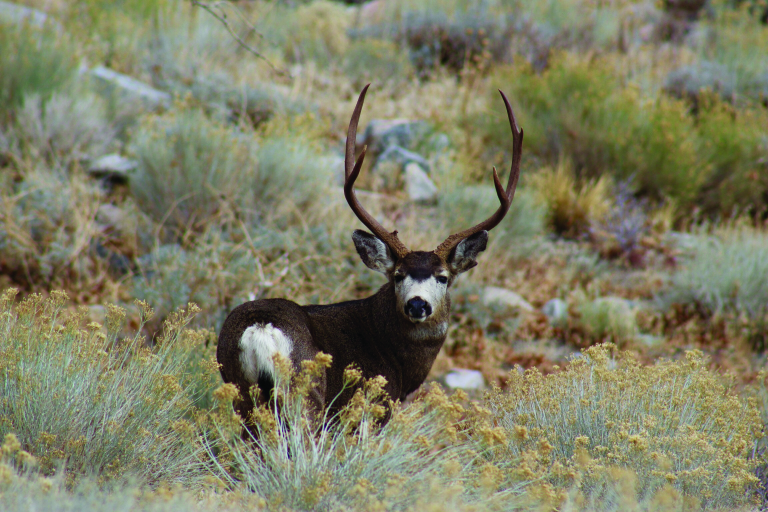
Why Do I Need to Report the Number of Days I Hunted?

by Carrie Wilson
12-14-2017
Website
Question: Why does the deer harvest report questionnaire ask about the number of days spent hunting? Why is this question important? What is the purpose of this information? (A.J.)
Answer: Your timing is perfect, as the deer tag reporting deadline of Jan. 31 is fast approaching. Deer tag reporting is now mandatory for all deer tag holders, successful or not. Successful deer tag holders are required to report their deer within 30 days of take or by Jan. 31, whichever date is first. Unsuccessful deer tag holders, whether they hunted or not, are required to report no harvest by Jan. 31 (California Code of Regulations Title 14, section 708.5).
Among the information deer tag holders must provide when reporting their tags is the number of days they spent hunting deer. This question gives our deer biologists some insight into the level of effort and a rough indication of population trends. For example, if the level of effort – or number of days spent hunting deer – keeps increasing for both successful and unsuccessful hunters, it could mean deer populations are declining. And the opposite holds true, too. If the number of days successful deer hunters spend in the field decreases over time, it could mean populations in a particular deer hunting zone are on the increase.
We want to thank you, A.J., for reporting your deer tag. A record high 84 percent of deer tag holders submitted harvest report for 2016. That information has provided our deer biologists with more accurate and precise harvest numbers than they’ve ever had. It’s an additional data tool in our biologists’ tool box – combined with traditional deer surveys and other field work – that is critical for calculating deer tag quotas for the next year and conserving our deer populations for the future.
Landing Net Requirements
Question: I know that according to the fishing regulations, “no person shall take finfish from any boat or other floating device in ocean waters without having a landing net in possession or available for immediate use to assist in landing undersize fish of species having minimum size limits; the opening of any such landing net shall be not less than eighteen inches in diameter.” But I have several questions about the 18 inch diameter landing net requirement.
First, it is my understanding that when fishing from a kayak, one is required to have a landing net that meets this requirement. However, I have also heard that if there is a group of kayakers fishing together, as long as one member of the party has a net, the requirement is also met for the members of the party. Is that true?
Second, folding landing nets are becoming more common and are convenient when space is limited. Since the shape of the “hoop” tends to be a triangle, what is the equivalent way to determine that nets of this design will meet the “not less than eighteen inches in diameter” requirement? (KC)
Answer: The regulation you referenced in your question comes from the California Code of Regulations Title 14, Section 28.65(d), which requires people fishing from a kayak or other floating device to have landing nets in possession and available for “immediate use” to facilitate release of a fish inadvertently caught that is unlawful to take. Yes, you should have one in your possession in your kayak. A landing net on another kayak adjacent to you is most likely not “immediately” available unless the kayaks are physically tied together or constantly no less than one arm’s length from the other.
For a triangular shaped landing net, the inside diameter should be no less than 18 inches at any point. You should be able to take a circular hoop that is no less than 18 inches and have it pass through the entire opening of the triangular landing net. The circular hoop must be laid flat along the same plane as the triangle (picture a circle small enough to fit inside a triangle on a piece of paper).
Tracking Game onto State Parks Property
Question: Just a quick question about tracking a deer or hog. If we’re hunting on private property, with permission of course, and an animal is wounded and its trail leads into a state park that borders the private property, what do we do? Contact the ranger of that park or just go in and retrieve it? I know we can’t have weapons in state parks. (Dean)
Answer: The best thing to do in this situation would be to contact your local wildlife officer and ask them to help facilitate the retrieval of the animal. When archery hunting, it is recommended to hunt farther from property boundaries to avoid this type of problem as animals taken with archery equipment usually travel farther after a lethal wound than those shot with a rifle.
Carrie Wilson is a marine environmental scientist with the California Department of Fish and Wildlife. While she cannot personally answer everyone’s questions, she will select a few to answer each week in this column. Please contact her at CalOutdoors@wildlife.ca.gov.
Website Hosting and Design provided by TECK.net